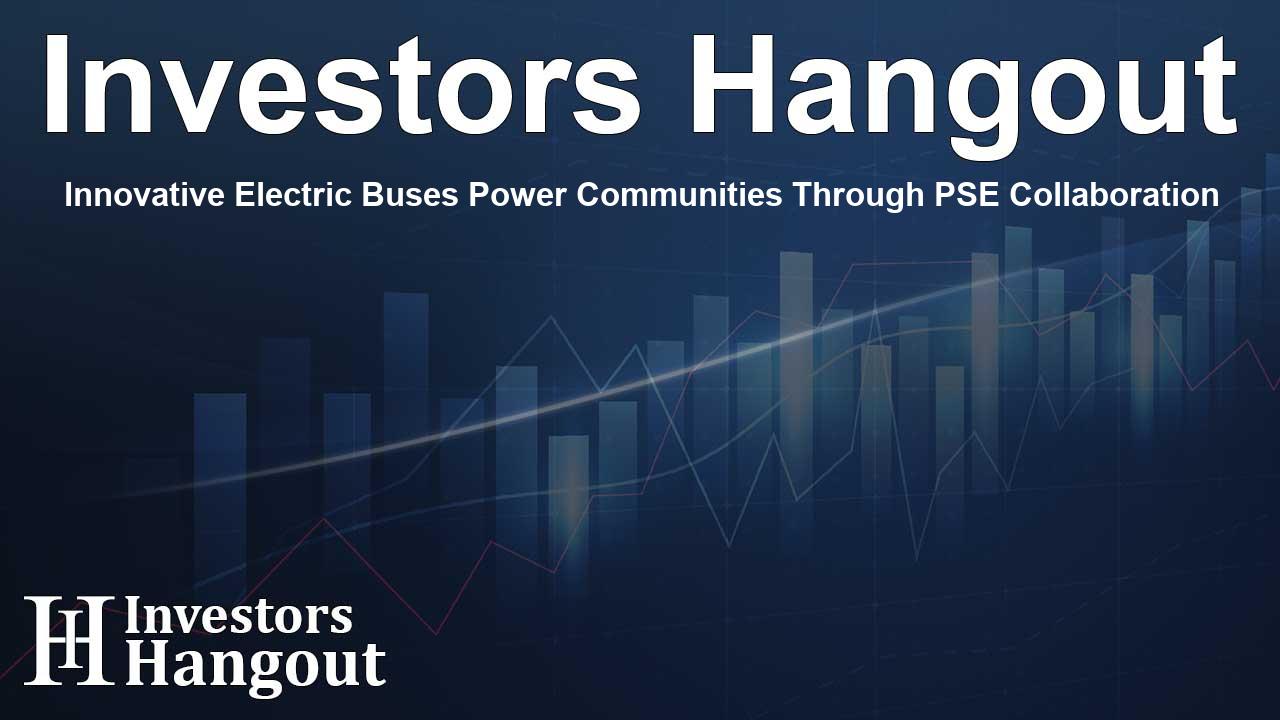Innovative Electric Buses Power Communities Through PSE Collaboration

Electric School Buses: A New Role for Community Power
BELLEVUE, Wash — Imagine a school bus not just as a vehicle for transport, but a dynamic tool for community energy. This transformation is occurring thanks to the collaboration between Puget Sound Energy (PSE) and local school districts, supported by a grant from state funding initiatives. In an era of increasing need for sustainable solutions, these electric school buses are stepping up to be invaluable assets not only for education but also for energy efficiency.
Transforming Education and Energy with Electric Buses
Through innovative efforts, PSE is engaging with the Snoqualmie Valley and Olympia School Districts to rebrand traditional yellow buses into mobile power stations. They aren't just for shuttling kids anymore; these buses are redefining their purpose. With their operation primarily during the school run in the mornings and afternoons, they become perfect candidates for energy services in the evenings when demand peaks. Moreover, during summer, when they are typically idle, these buses can contribute significantly to the grid.
Funding and Community Impact
The initiative is partially funded by a substantial grant emphasizing clean energy technologies aimed at reducing greenhouse gas emissions. The funding, amounting to $612,000, is part of the Washington Department of Commerce's Clean Energy Community Grants program. This program not only supports the school's energy goals but also allows PSE to harness additional resources when it is most needed. The collaborative approach is proving beneficial — schools save on operational costs and students enjoy cleaner and more sustainable transportation options.
How It Works: The Technology Behind the Buses
So, how do these electric buses actually function as power sources? When they're not in use, they will connect to fast chargers that allow for bi-directional energy flow. This means during high energy demand times, these buses can deliver power back to the grid, working like a backup generator for communities. This technology not only ensures reliable energy delivery but also enhances the educational experience for students, with real-world lessons in sustainability and resource management.
Statements from Leaders
"This grant helps PSE to deploy innovative grid solutions that help transform how we serve our customers and communities," said Aaron August, PSE’s Chief Customer and Transformation Officer. The optimism echoed by Frank Wilson, Executive Director of Operations for the Olympia School District, reflects the enormous potential of this partnership, stating, "This partnership allows us to transform our transportation fleet into a valuable community asset."
Real-World Lessons in Sustainability
Ryan Stokes, the Assistant Superintendent of Snoqualmie Valley, emphasizes that the project's educational component teaches students the importance of innovation in sustainability. "These buses are rolling science lessons that demonstrate how we can all work together to create a cleaner, more resilient energy future," he added. This sentiment speaks volumes about the dual impact of the project on both energy management and educational values.
Future Prospects of V2G Technology
The potential does not end here. PSE is poised to enhance this initiative further by installing Vehicle-to-Grid (V2G) bidirectional DC Fast Chargers at local bus depots. These chargers, which are running on software provided by Nuvve, will facilitate this innovative energy solution. The construction and installation of these chargers are set to begin soon, with operations projected to start in conjunction with the upcoming school year.
The Broader Implications of Clean Energy Projects
Moreover, this initiative falls under Washington's Climate Commitment Act, which aims to support the reduction of climate pollution and improve public health across the state. As such projects evolve, they play a crucial role in shaping a more sustainable future, not just for students and schools but for entire communities. For more insight into clean energy initiatives and V2G technologies, keep an eye on PSE's updates and opportunities.
Frequently Asked Questions
What are electric school buses used for in this program?
Electric school buses are being transformed into mobile power stations that can deliver energy back to the grid, especially during peak demand times.
How does bi-directional charging work?
Bi-directional charging allows electric buses to both receive energy from the grid and return excess energy back to it, effectively acting as power sources when not in use.
What benefits do participating school districts gain?
Participating school districts save money on fuel and maintenance costs while contributing to cleaner transportation for their students.
Who funded the electric bus initiative?
The initiative is partially funded by a $612,000 grant from the Washington Department of Commerce's Clean Energy Community Grants program.
Why are school buses suitable for V2G technology?
School buses are ideal for V2G technology due to their large batteries, predictable schedules, and the fact that they often remain parked during peak energy demand times.
About The Author
Contact Logan Wright privately here. Or send an email with ATTN: Logan Wright as the subject to contact@investorshangout.com.
About Investors Hangout
Investors Hangout is a leading online stock forum for financial discussion and learning, offering a wide range of free tools and resources. It draws in traders of all levels, who exchange market knowledge, investigate trading tactics, and keep an eye on industry developments in real time. Featuring financial articles, stock message boards, quotes, charts, company profiles, and live news updates. Through cooperative learning and a wealth of informational resources, it helps users from novices creating their first portfolios to experts honing their techniques. Join Investors Hangout today: https://investorshangout.com/
The content of this article is based on factual, publicly available information and does not represent legal, financial, or investment advice. Investors Hangout does not offer financial advice, and the author is not a licensed financial advisor. Consult a qualified advisor before making any financial or investment decisions based on this article. This article should not be considered advice to purchase, sell, or hold any securities or other investments. If any of the material provided here is inaccurate, please contact us for corrections.
